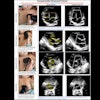
Complete documentation of any radiology procedure is the key to appropriate reimbursement. This is especially true for venous duplex Doppler ultrasound exams, in which including fewer than the required number of elements for a complete procedure will result in reimbursement for a limited study.
A complete study includes bilateral upper or lower extremity imaging.
Lower extremity studies require documentation of all the following vessels on both legs:
- Entire femoral vein
- Entire saphenous vein
- Entire popliteal vein
The calf veins may also be included, but they are not required for a complete study.
Upper extremity studies require documentation of all the following vessels on both arms:
- Subclavian veins
- Jugular veins
- Axillary veins
- Brachial veins
- Basilic veins
- Cephalic veins
Forearm veins may also be included, but they are not required for a complete study.
A limited study is any exam that does not include all the above-listed vessels. It could also be a unilateral exam, or one done for preoperative venous mapping (e.g., vascular mapping for bypass grafts).
Whether the study is complete or limited, all three duplex techniques must be performed and documented, including the following:
- Gray-scale imaging
- Spectral analysis
- Color Doppler flow
If any of these techniques is missing, a duplex imaging study was not performed and cannot be billed as such. It is necessary to document all techniques and provide interpretation for each one.
A handy table was produced a few years ago by the Coding Committee of the Radiology Business Management Association (RBMA) and we have reproduced it here. This "buzz words" chart can be very helpful when coding extremity ultrasound exams.
| Required Elements for Duplex Imaging | ||
| Duplex = Spectral Analysis and Color Flow | ||
| Element 1: Imaging | Element 2: Spectral Analysis | Element 3: Color Flow |
| B-mode | Acceleration Rate | Color Flow |
| Diagnostic Evaluation | Bandwidth Broadening | |
| Gray Scale | Mono, Bi, or Tri | |
| Real-time Imaging | Peak Systolic Velocity | |
| Two-Dimensional Imaging | Phasicity | |
| Resistive Index (RI) | ||
| Spectral Broadening | ||
| Spectral Doppler | ||
| Velocity | ||
| Pulsed Doppler | ||
| Pulsatility | ||
| Waveform Analysis | ||
Radiologists might also benefit by keeping this list handy, although the best solution to compliant and complete dictation is for them to use a template system. Regardless of the method, documenting all of the required elements of these exams will allow the coding team to maximize reimbursement by coding to the highest level.
The coding for these exams is as follows:
| Duplex scan of extremity veins including responses to compression and other maneuvers | |
| Complete bilateral study | 93970 |
| Limited or unilateral study | 93971 |
 Erin Stephens.
Erin Stephens.The coding team should be providing feedback to the radiologists when they see missing elements, to be certain about the extent of the exam. If a complete exam was done but not documented thoroughly, then an addendum to the report could mean additional reimbursement. In addition to correct coding, be sure to check with commercial payers and with your local Medicare carrier to be sure the procedure is considered to be medically necessary under the patient's circumstances.
Optimizing reimbursement always depends on coordination of the necessary procedural steps, full documentation of those steps, and then a fully trained coding team who are up to date on the latest changes.
Erin Stephens is senior client manager, education at Healthcare Administrative Partners.
The comments and observations expressed are those of the author and do not necessarily reflect the opinions of AuntMinnie.com.



















